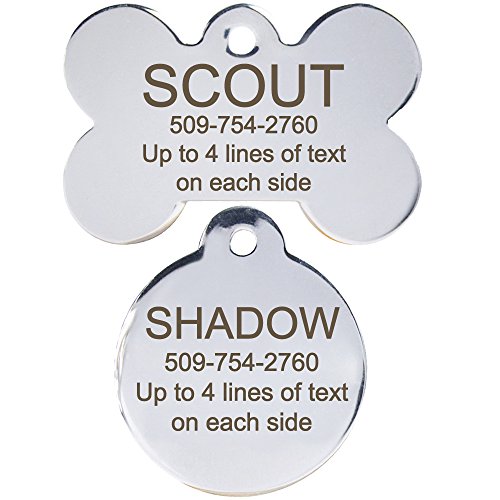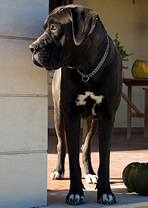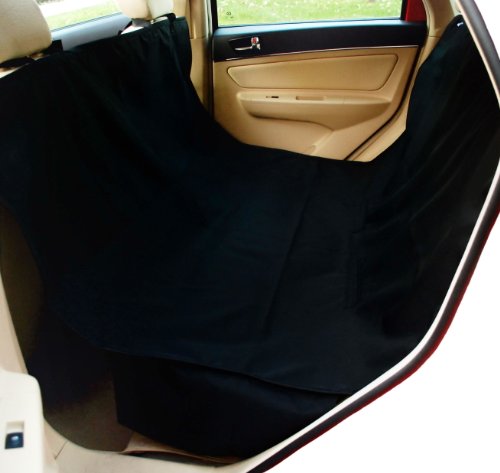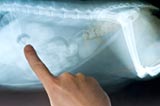
While you might believe that selecting a collar for your giant breed dog is going to be simple, one trip to a well stocked pet supply store could have you seeing stars! There are many different collar options for your large dog, so we’ve set out to create a guide to help you choose the best one for your pooch.
Buckle Collars: (also known as flat collars) These are the most commonly seen collars and are what most people think of putting on their dog. Buckle Collars are great for attaching identification tags (a must have for any dog!) and come in a multitude of colors and styles. They can be made from a variety of materials, from hemp to nylon to leather. Leather collars tend to wear quite well and are a favorite choice of mine. A Buckle Collar can be used as your dogs primary collar if he does not have a problem with pulling against the leash or need any communication via leash corrections. While it may seem to be the “tamest” of the collars, a dog that consistently pulls against a buckle collar is more likely to sustain damage to his trachea than a dog walked correctly on a choke chain or a pinch collar. A buckle collar can be worn at the same time that other types of collars are used in order to keep your dog’s identification on him at all times.
Buy a Buckle Collar here
Rolled Leather Collars: Rolled Leather Collars are almost the same as buckle collars except the tightly rolled leather is a good choice for dogs that have sensitive skin or longer fur. These collars can prevent breakage of the hair from being pushed down continuously by a flat collar.
Buy a Rolled Leather Collar here.
Martingale Collars: Martingale Collars were originally designed for Sighthounds – these breeds have necks that are larger than their heads, which enable them to slip out of regular buckle collars. However, any breed of dog can use a Martingale Collar. These collars (which are almost always made out of nylon or some sort of fabric) could be called a “gentle” choke chain. To fit a Martingale correctly, measure it to fit the exact size of your dog’s neck when it is pulled closed. When your dog is not pulling on the leash the collar should hang loose. While these collars are not ideal for all training situations, they do provide more control than a buckle collar or a harness.
Buy a Soft Martingale Collar here.
Choke Chains (also known as slip collars): Choke Chains can be valuable training tools, but must only be used properly in training situations. If you are going to use one of these collars please learn how to properly correct your dog with the aid of a trainer. Many people unknowingly put Choke Chains on their dogs in an incorrect manner, which could prove to be dangerous to their pet. A choke chain should look like a horizontal “P” when you hold it in front of your dog. The loop where you attach the leash should be on top of your dog’s neck. You should avoid using choke chains on dogs with breathing issues as these collars do put direct pressure on the trachea.
Buy a Choke Chain here.
Pinch Collars (also known as prong or self-correcting collars) : While this type of collar may look quite medieval, I assure you – it is not!This collar is quite misunderstood, but it is not a good choice for all big dogs. It should not be used on dogs with aggression issues or those who are fearful. It is also never a good choice for young puppies. A properly fitted pinch collar should rest snugly just under your dog's ears. The collar works by putting even pressure on the neck of the dog, so no direct pressure is put on the trachea when using a pinch collar. Once again, please seek professional assistance when fitting your dog with this type of collar. You need to learn how to use them correctly to avoid injuring your dog.
Buy a Pinch Collar here.
Harnesses: A harness is another piece of gear that comes in a variety of styles to fit every dog (and owners) liking! If you have a dog that pulls, however, avoid this type of equipment as it kicks in your dogs “opposition reflex.” That’s the reflex that makes sled dogs do what they do – pull against pressure. That’s right, normal harnesses will actually make your dog pull MORE! On the other hand, if you have a mellow large breed that does not pull, harnesses can be a good choice. They do not put pressure on the neck and generally secure your dog well (look for harnesses with metal buckles, not plastic ones when you are shopping for a big dog!).
Buy an Adjustable Harness here.
Gentle Leader: The Gentle Leader is a head collar that works using the theory that where a dog’s head goes, it’s body will follow. The Gentle Leader applies pressure to the back of your dogs head when he pulls. Dogs instinctually move against pressure, thus this device causes them to cease pulling. While the Gentle Leader and other head harnesses can be effective choices for helping owners who have out of control dogs, they do not assist in training the dog to walk properly. A dog that walks wonderfully on a Gentle Leader will begin pulling again when the device is removed. Gentle Leaders are not suitable for dogs with very flat noses and they can injure thin-necked dogs. Gentle Leaders are not suitable for jumpy or nervous dogs, as they do not provide enough control.
Buy a Gentle Leader here.
Easy Walk Harness: The Easy Walk Harness is my choice when it comes to “no pull” devices. This unique harness actually has the leash hook in the front of your dog’s chest. The device works to stop pulling by tightening across your dog's chest and shoulder blades. The strap sits low on your dog and does not hit his neck area at all. I have used this product before with a few clients who have trouble pullers as an intermediate piece of equipment and have had good results with it. Unlike the Gentle Leader, which dogs do not like to have sitting on their muzzle much of the time, the Easy Walk Harness seems to be an easy adjustment for most canines. The only downside to the device is the same criticism I have for the Gentle Leader – it works by pressure points and thus does not teach your dog. When the device is removed your dog will revert to pulling. However it is a great way to deal with pulling issues in your large dog on a short-term basis.
Buy an Easy Walk Harness here.
For more information on dog collars and leads, check out our article How To Choose The Right Collar or Harness For Your Dog or our Product Review: Big Bully Dog Lead
 How to Find My Runaway Dog
If you are a dog owner, you
How to Find My Runaway Dog
If you are a dog owner, you
 Cane Corso Breeder Interview Breeder Interview: Virginia Dunn Discusses The Great Italian Mastiff
Cane Corso Breeder Interview
The Dog Guide is pleased to p
Cane Corso Breeder Interview Breeder Interview: Virginia Dunn Discusses The Great Italian Mastiff
Cane Corso Breeder Interview
The Dog Guide is pleased to p
 Pet Hammock for Car
We have an old dog called Sa
Pet Hammock for Car
We have an old dog called Sa
 Why Vet Care is So Expensive
Why Vet Care is So Expensive
Why Vet Care is So Expensive
Why Vet Care is So Expensive
 Bissell Shed Away Review
Pets can get expensive and t
Bissell Shed Away Review
Pets can get expensive and t
Copyright © 2005-2016 Pet Information All Rights Reserved
Contact us: www162date@outlook.com